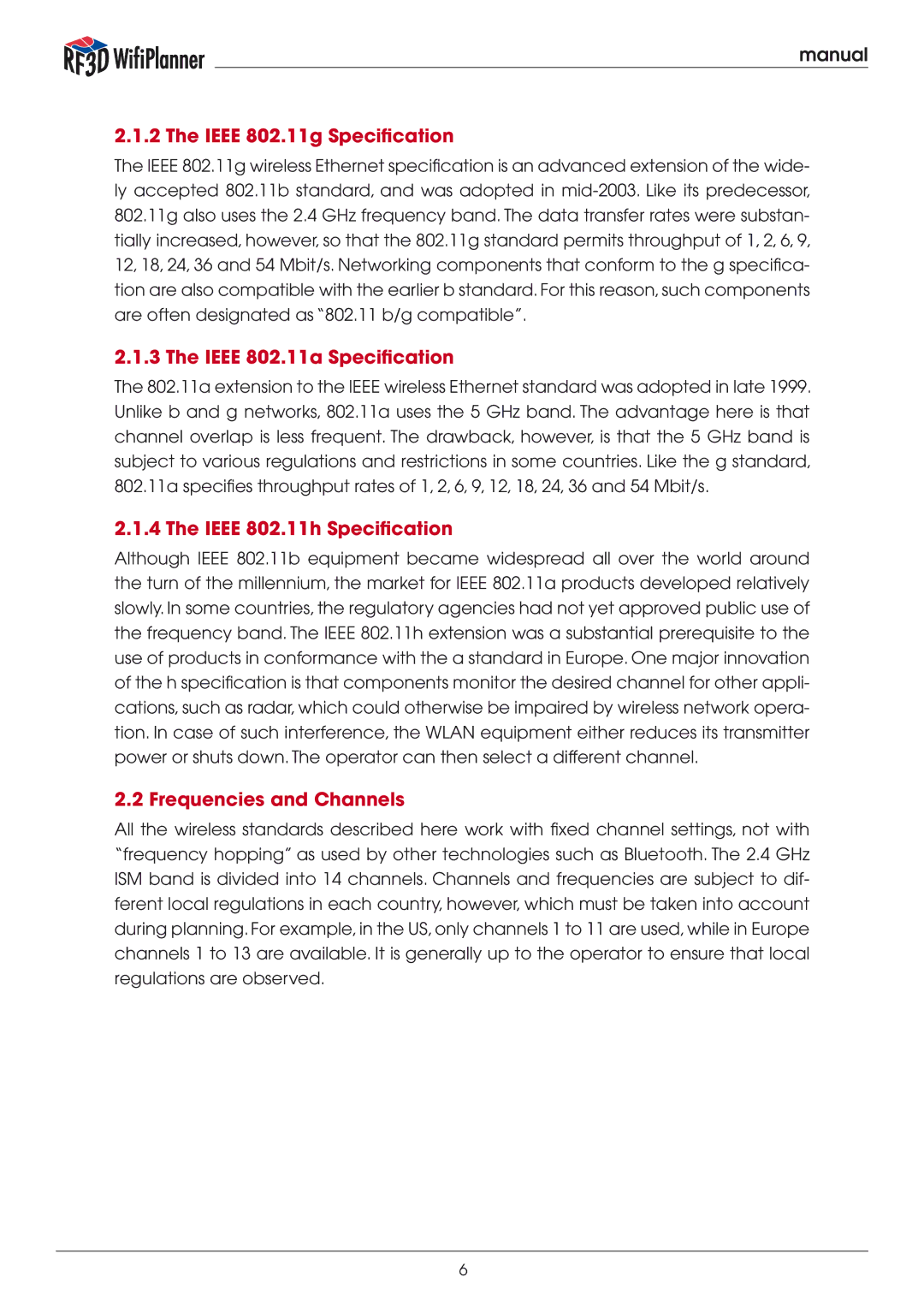
manual
2.1.2 The IEEE 802.11g Specification
The IEEE 802.11g wireless Ethernet specification is an advanced extension of the wide- ly accepted 802.11b standard, and was adopted in
2.1.3 The IEEE 802.11a Specification
The 802.11a extension to the IEEE wireless Ethernet standard was adopted in late 1999. Unlike b and g networks, 802.11a uses the 5 GHz band. The advantage here is that channel overlap is less frequent. The drawback, however, is that the 5 GHz band is subject to various regulations and restrictions in some countries. Like the g standard, 802.11a specifies throughput rates of 1, 2, 6, 9, 12, 18, 24, 36 and 54 Mbit/s.
2.1.4 The IEEE 802.11h Specification
Although IEEE 802.11b equipment became widespread all over the world around the turn of the millennium, the market for IEEE 802.11a products developed relatively slowly. In some countries, the regulatory agencies had not yet approved public use of the frequency band. The IEEE 802.11h extension was a substantial prerequisite to the use of products in conformance with the a standard in Europe. One major innovation of the h specification is that components monitor the desired channel for other appli- cations, such as radar, which could otherwise be impaired by wireless network opera- tion. In case of such interference, the WLAN equipment either reduces its transmitter power or shuts down. The operator can then select a different channel.
2.2 Frequencies and Channels
All the wireless standards described here work with fixed channel settings, not with “frequency hopping” as used by other technologies such as Bluetooth. The 2.4 GHz ISM band is divided into 14 channels. Channels and frequencies are subject to dif- ferent local regulations in each country, however, which must be taken into account during planning. For example, in the US, only channels 1 to 11 are used, while in Europe channels 1 to 13 are available. It is generally up to the operator to ensure that local regulations are observed.
6
